Droughts all over the North American Continent have made people hyper-aware of water conservation techniques, such as installing low-flow toilets in their homes.
Of course, this takes on added meaning for RV travelers who like to boondock or stay at primitive campgrounds where they don’t always have easy access to fresh water supplies.
Suppose you often camp without full water hookups and worry about how much fresh water you can bring while minimizing the capacity of your black water storage tank. In that case, you’re probably wondering just how much water does an RV toilet use per flush?
The average gravity-flush toilet, as you find in a lot of medium to larger RVs, uses around .75 to 1 gallon of water per flush.
However, this type of toilet isn’t the only option for a water-conscious RVer to consider. Knowing how your RV toilet works and some other low-capacity options can help you stretch your water supplies when boondocking.
What Are The Different Types Of RV Toilets?
You might be surprised to hear that there are several different types of RV toilets to consider. Some are low-flow or low-capacity toilets that might use as little as 16 to 20 fluid ounces of water per flush.
Some new “Dry Flush” or composting toilets are making their way into smaller RVs, teardrop trailers, and popup campers.
Some of the following RV toilet options can come as a standard or optional upgrade. Though you might not always be able to change one out for another without making some major modifications to your RV’s bathroom. So, it helps to know each option and how it works.
A Gravity Fed RV Toilet
A gravity-flush RV toilet works very much like the toilet you have in your home, but it only uses around .75 to 1 gallon per flush. At the same time, many residential toilets will use as much as 1.9 gallons per flush. This is because there are some minor differences between the two.
An RV gravity-flush toilet has a small tank filled with fresh water. Pulling the handle opens the lower valve, allowing the effluent wastewater in the toilet bowl to flow out as fresh water rushes in. Some of these toilets have tanks right on the back, whereas others simply draw the fresh water down from the nearby pipes.
A typical gravity-flush RV toilet uses around .75 to 1 gallon of water per flush. Though some low-flow models out there can use as little as 16 to 20 ounces of water per flush.
If you work directly with an RV manufacturer who is known for making boondocking RVs, they might be able to swap out an optional low-flow model in place of the standard gravity-flush toilet.
Some larger RV dealerships can also do this. It’s an easy swamp most of the time because the plumbing and storage tanks don’t need any major modifications.
Marine Toilet In An RV
Marine toilets have different wet and dry pumping modes that can use as much as little as half a liter or as much as 2 to 3 liters per flush. They are sometimes used in smaller RVs, popup campers, small travel trailers, and even a few teardrop trailers with limited storage tank space. They were originally designed to comply with maritime laws restricting sewage waste entering the sea.
When it isn’t being used, the toilet bowl of a marine toilet remains dry until you need to use it; it has both a wet pumping and dry pumping mode. Though you generally only use the dry pumping mode when the vehicle is moving so the water in the bowl does not splash or spill out.
Most of the marine toilets you find being used in an RV have either electric pumps or some type of hand-powered pump to let you control the flow of the water. When you flush a special ball valve at the bottom opens to release the wastewater, which is then stored in a heavy-duty waterproof black water holding tank.
Marine toilets let you use a very small amount of water. With tight conservations, you might be able to get by with only half a liter per flush. Though if you are wet pumping a marine-grade toilet, it could take as much as 2 to 3 liters per flush.
An RV Cassette Toilet
A cassette toilet uses around 2 to 3.5 liters per flush. This makes it another low-flow option with a ball valve at the bottom of the toilet bowl. The biggest difference is that the cassette toilet deposits the effluent wastewater in a relatively small black water storage tank.
Most cassette toilet tanks are around 5 to 6 gallons in size. Though there are some models out there that can have a black water tank capacity of up to 30 gallons.
So, it’s not so much the freshwater it uses per flush that is a concern; it’s the amount of black water it needs to store. Once the cassette toilet’s black water tank is full, it can be released from the RV’s exterior and poured into an approved RV dump station.
A Composting Toilet In An RV
Composting toilets only use around 6 ounces of water per flush. They are an increasingly popular alternative option to consider in your RV. Most have to be installed by the RV manufacturer, as they require a special compost repository.
A composting toilet relies on separating the solid waste from the effluent liquids. There is a special composting material like coconut coir, is used to break down the solid material in a modest-sized holding tank.
Composting toilets are rustic and somewhat expensive in RVs. They also tend to take some time to learn how to use it correctly. Misuses can lead to problems with foul odors, clogs, and frequently needing to stop to dump the composting waste.
While they aren’t a totally “Dry Flush” toilet, a lot of the best composting toilets you’ll find for RV use will only require about 6 ounces of water per flush. This is about as low as you can get for water usage per flush.
A Dry Flush RV Toilet
Dry flush RV toilets are actually an electric option that doesn’t require any incoming fresh water. They have a little bit in common with a diaper genie. Except it has a cartridge that holds a unique metallic bag-like liner that holds both solid and liquid waste.
Whenever you “Flush” the toilet, a special internal mechanism tightly twists the bag to seal away the effluent material waste. A special storage section at the bottom of the dry flush toilet then stores the twisted section of the bag.
Most dry flush RV cartridges can hold enough liner bags to last for about 17 flushes. When the indicator light on the toilet lets you know when there are two flushes left you can dispose of the used cartridges. Then you simply replace the cartridge holder with a new one.
The downside of a dry flush RV toilet is that the cartridges can be expensive, especially if you need to replace them often. Though it’s an ideal way to maximize your fresh water storage capacity for other things like bathing, washing hands, or cleaning the dishes.
How To Conserve RV Toilet Water And Save On Every Toilet Tank Flush
Let’s say you have an RV with a gravity-flush toilet or a cassette toilet, and you don’t have any other option to swap it out for a more water usage option. Yet you still want to do a little boondocking for more than just a long weekend, so you need to make the most out of your fresh water and black water storage tanks.
In a time like this, you might want to tap into some of the following techniques to minimize the amount of water you need to use and store in your RV toilet.
1: Use The Campground Toilets
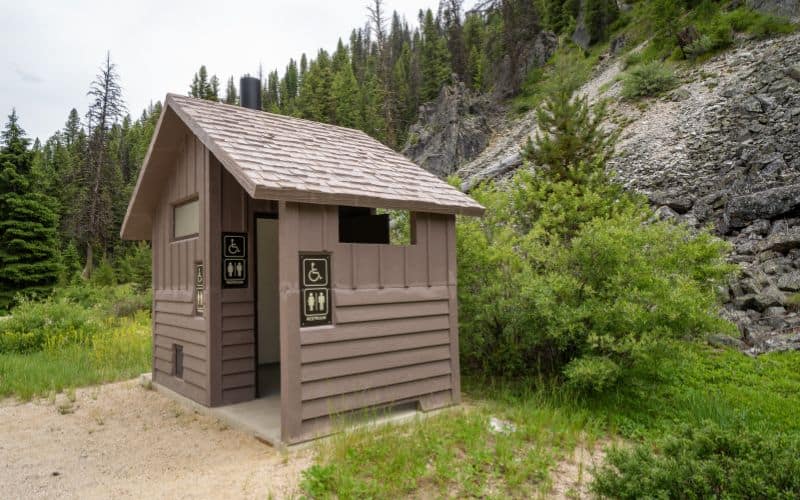
This is the most obvious option that a lot of RV campers choose. All but the most rustic of primitive campgrounds will have vault toilets or some type of outhouse that you can use. Yes, I know some of them are drastically unappealing, but they will certainly get you by in a pinch.
2: Use The Mellow-Yellow Method
Nothing is saying that you have to flush urine after every time someone uses the facilities in your RV. Letting two to three “Number Ones” sit in the bowl for an hour or two before flushing can cut your water usage and black water storage by as much as 50%!
3: Bring A Porta Potty
A lot of RV travelers forbid family members from going poop in the RV toilet in all but the direst of emergencies. Suppose this sounds like standard policy for your family, but you will be boondocking or off-road camping where there simply isn’t any other bathroom alternative. In that case, a porta-potty is an outdoor alternative for “Number Twos.”
Not only does this porta-potty strategy work for maintaining the relative freshness of the RV’s interior, but it also reduces the amount of water each person uses throughout the camping trip. You can simply put the porta potty in a privacy tent, set a few yards away, and downwind from your RV campsite!
4: Reuse Gray Water
Some RV’s have modest fresh water storage tank capacity but tons of gray and black water storage capacity. In a scenario like this, you might want to try reusing freshwater or gray water from other sources.
A simple bucket can be used to collect gray water from your storage tank, which can be poured into a gravity-flush RV toilet tank. You could also use a bucket to catch the cold water from your RV’s shower when you first turn it on and wait for the water to get hot.
Sure, the water in the toilet bowl might be a little gray, and you should strongly consider using a filter or a sieve to make sure stray bits of food from dishwashing don’t end up in your toilet tank. Though it’s a potentially sound alternative to let you stretch your RV’s fresh water usage to the max.
Frequently Asked Questions
Can I Bring a Portable Composting Toilet in My RV?
There are some portable composting toilets out there that you can bring with you camping. However, they tend to release some odors that you probably don’t want to live with inside the small confines of an RV. So, it’s best to keep it in a modest privacy tent just like you would with a porta potty.
Conclusion
The average gravity-flush RV toilet uses around .75 to 1 gallon per flush, taxing an RV’s fresh and black water storage supplies during a boondocking camping trip. Though there are some low-flow RV toilet options out there that might only use as little as 16 to 20 fluid ounces of water per flush.
Marine toilets and RV cassette toilets use far less water per flush and thus need to store less water over the course of a camping trip. With thoughtful conservation, you might be able to get away with as little as 2 liters per flush.
Composting and dry flushing RV toilets use almost zero water. However, they tend to be relatively expensive and technical to use, which might be off-putting if you’re a casual RV camper.
Of course, you can also do simple things to reduce the strain on your fresh water supplies when you flush your RV toilet. Letting things that are yellow to mellow, using a porta potty for pooping, and reusing gray water to flush your RV toilet can all minimize the amount of water your RV toilet drains per flush from the freshwater tanks.

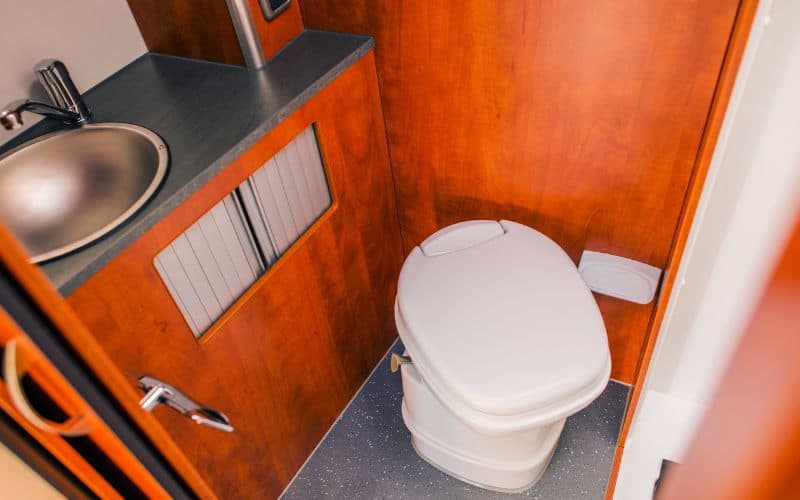
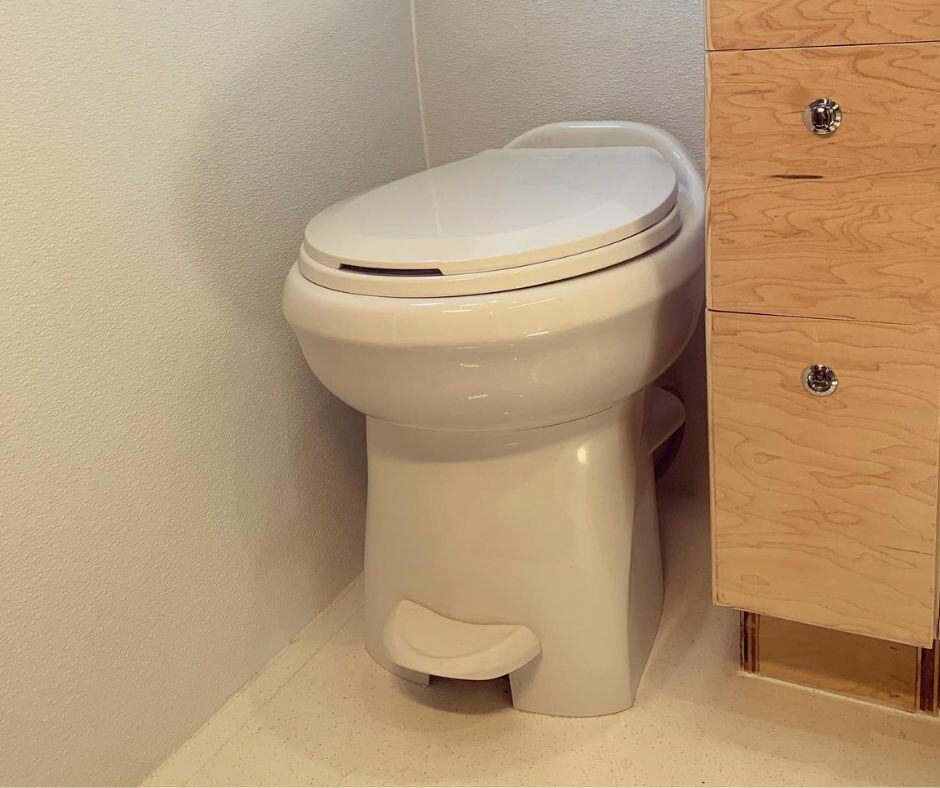
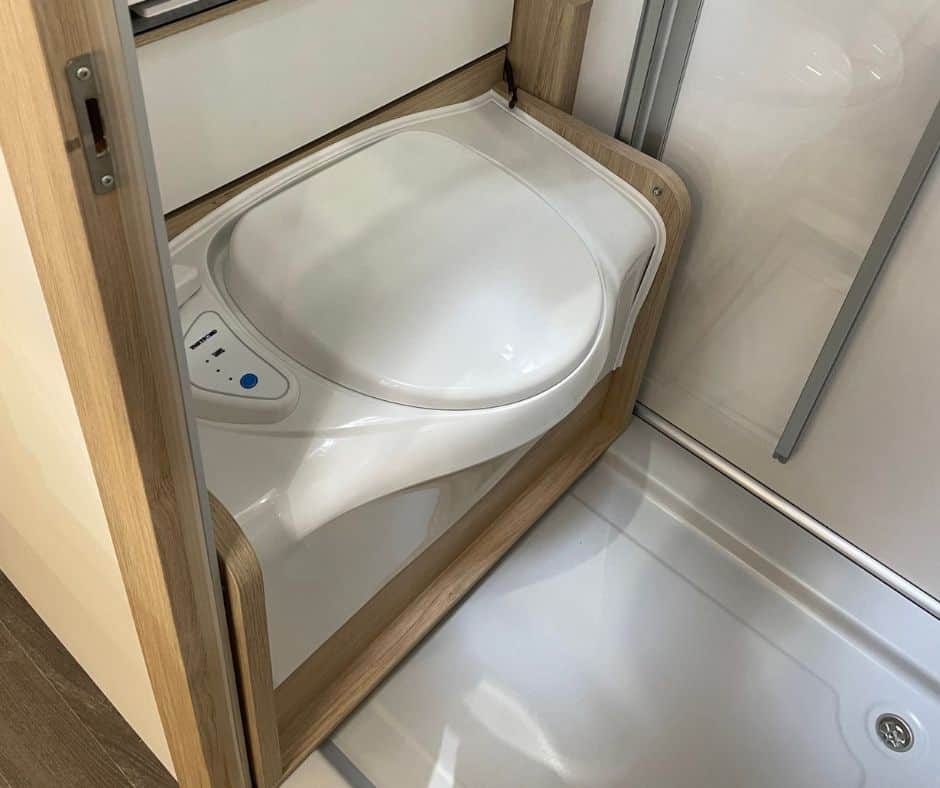
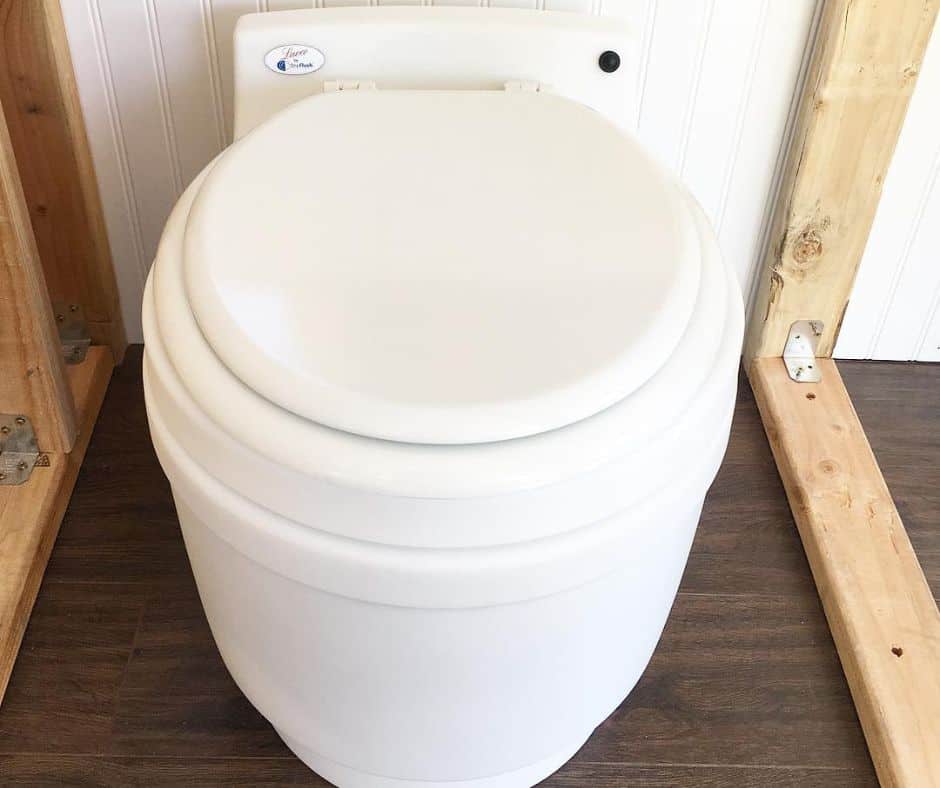
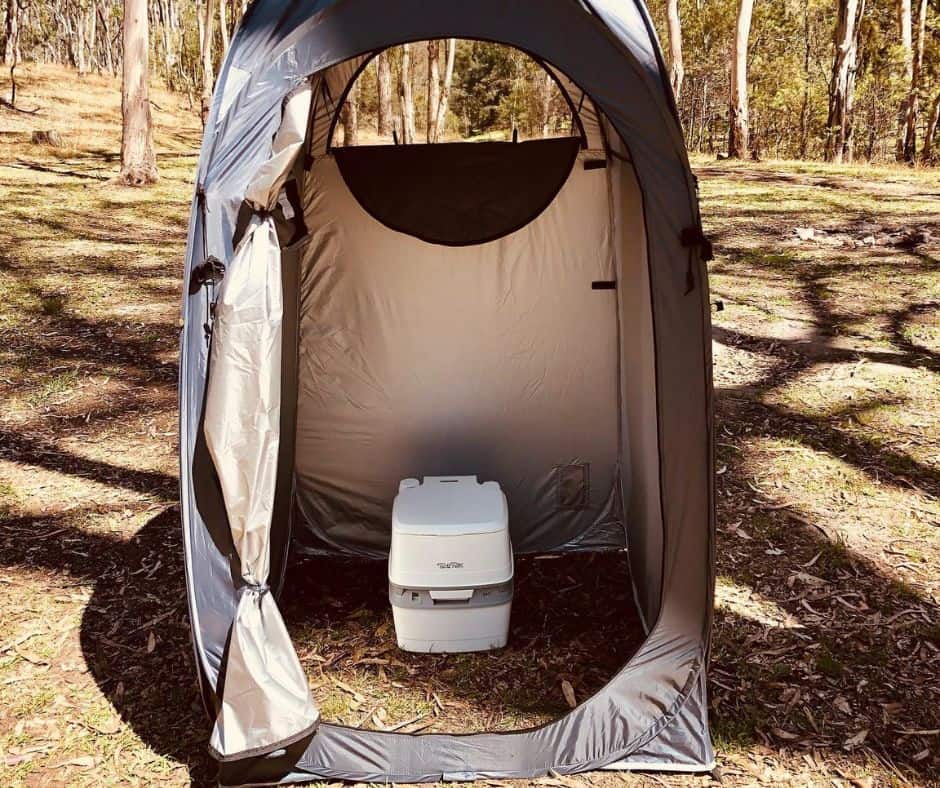


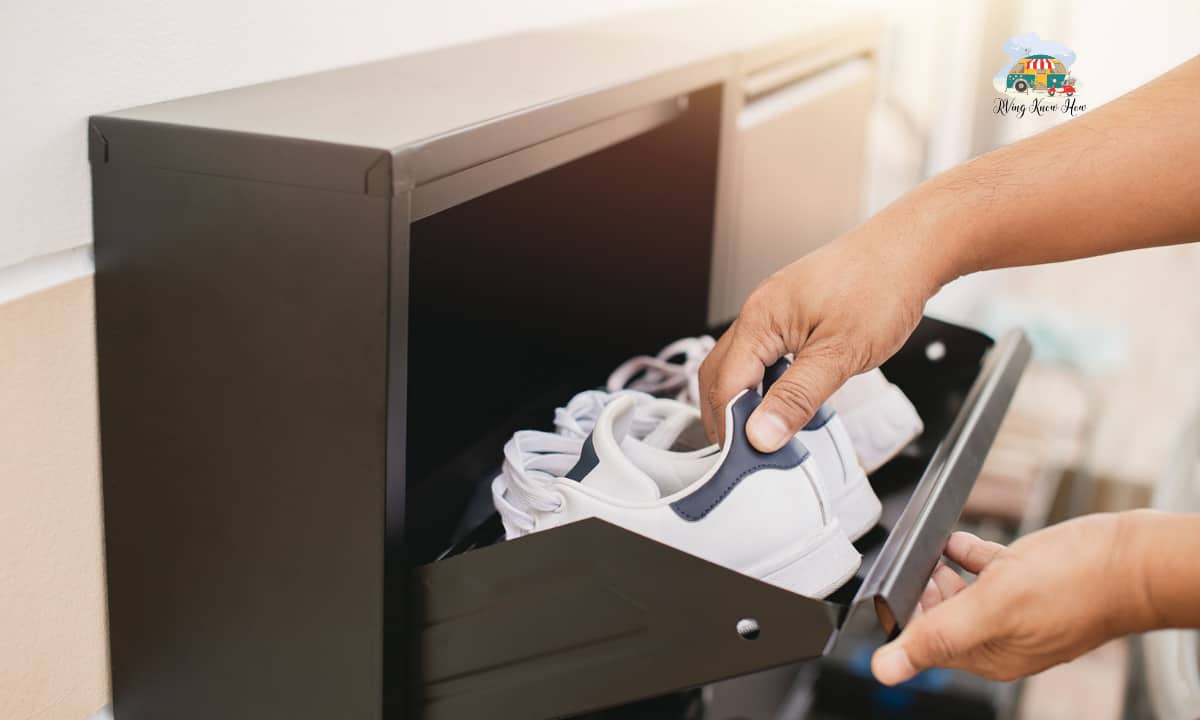
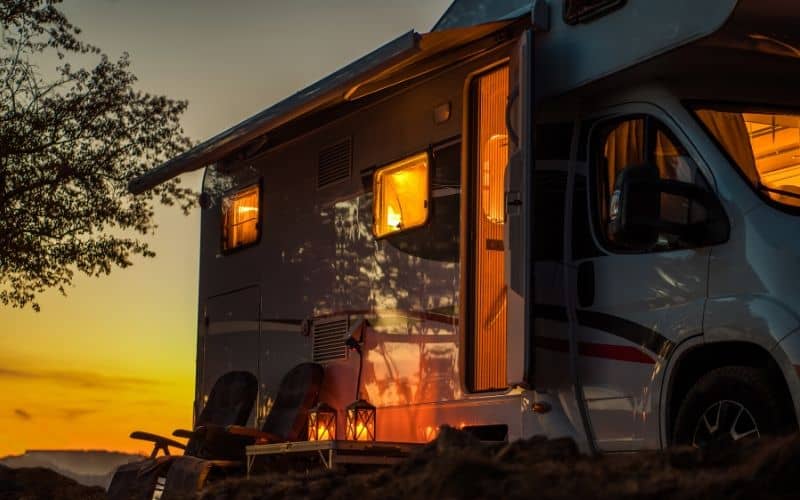
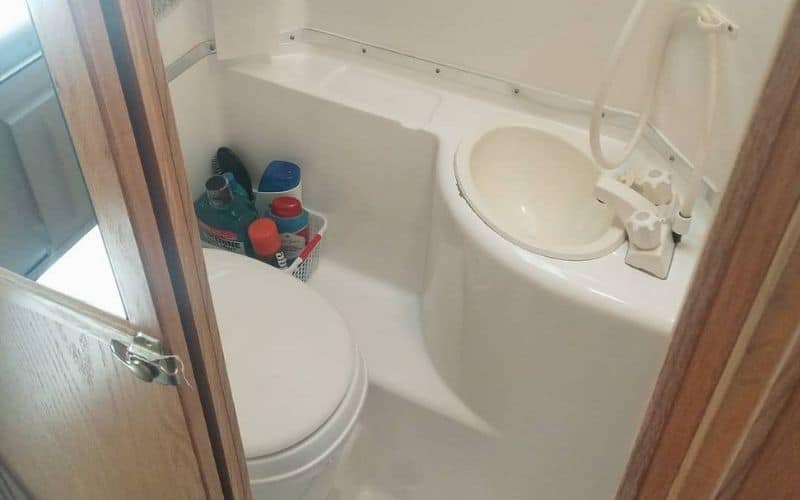
1 Comment
William Korn
1 year agoUnit: 2003 Sprinter Freightliner as 2004 MB Cruiser
Model w/ dry bath
Flush Toilet used for urine only. No toilet paper.
Portable Toilet in shower, used as seat, shower headroom 6 ft. (I am over that!)
Portable used as bag toilet. Holding tank never filled as is the case of the fresh tank.
Pump garden sprayer used to flush installed toilet. 3 oz. per flush, also vanity hand washing.
Garden Sprayer, modified by removing wand is used for washing dishes and hands at the kitchen unit
Total water savings in excess of 90%.
Portable water filter system (battery powered) so any stream or lake provides drinking and bathing water.
1 Gal. jugs (20) carry drinking water as I’ve always been afraid of the monster under the bed and in the water tank. (Filter again, no way)
More info. if desired……..